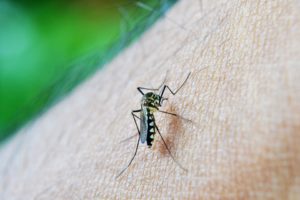
What are the main similarities between Zika and flaviviruses such as dengue and Japanese encephalitis?
They’re all transmitted by mosquitoes (although the vector for Japanese Encephalitis is Culex whereas Zika and dengue are Aedes). Clinically, dengue and Zika illnesses show similar symptoms with rash, fever, myalgia, eye pain, headachesm and Japanese encephalitis and Zika are somewhat similar in their neurotropism. For all of these diseases, many infected persons are asymptomatic or sub-clinical. Dengue and Zika can be sustained by transmission from person-to-mosquito-to-person, so infected travelers can introduce them into new areas if competent mosquito vectors are present and the weather is warm enough. Both Dengue and Zika have expanded greatly in geographic distribution in recent months and years.
How is Zika unique compared to the other flaviviruses?
Zika has been discovered more recently than other flaviviruses and for decades after its identification, it was thought to cause only mild illness. Unlike the other flaviviruses, Zika can be transmitted via sexual contact and causesmicrocephaly as well as other severe developmental abnormalities.
What did you learn from your research into non-vector transmission of dengue that could be applied to Zika?
Dengue is known to transmit via mucocutaneous routes. Zika has not yet been documented in this way but it seems possible. therefore, we need to take precaution to avoid mucocutaneous contact with Zika-infected bodilyfluids such asurine, saliva,blood and semen. We also need to be alert to potential transmission via mucocutaneous contact as well as aerosol/oronasal transmission.
Were any of your findings unexpected?
The recent documentation of dengue virus transmission via breast milk, the resulting illness in the infant and the possibility of dengue infection via aerosol transmission were all unexpected findings in this study.The passage of infective Zika virus particles in breastmilk was documented in a woman confirmed with acute Zika infection; this raises the possibility of transmission by breastfeeding.
Do you have any follow-up studies planned?
We are continuing to monitor reports of transmission of dengue virus via non-mosquito routes and comparing these to any new transmission routes reported with Zika virus.
2 Comments